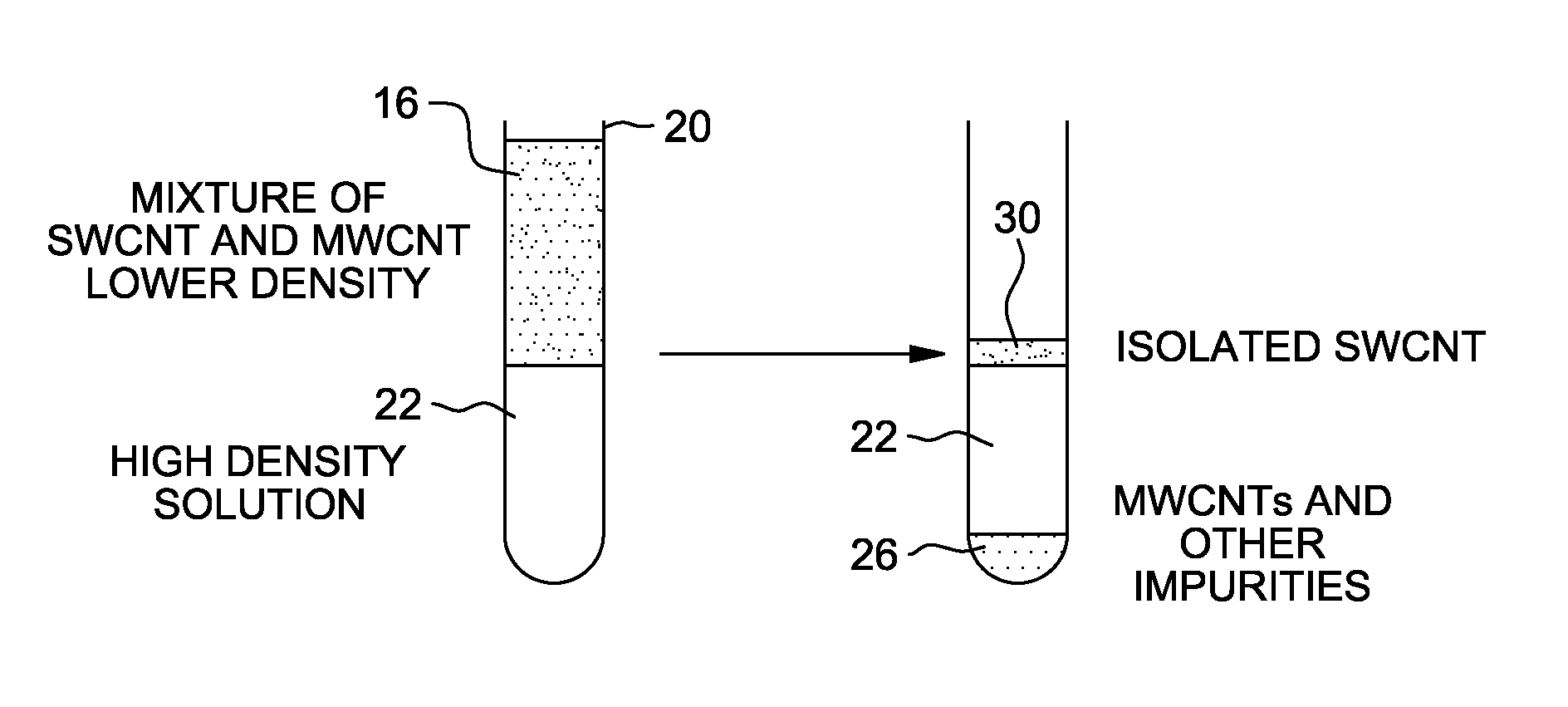Isolation of single-walled carbon nanotubes from double and multi-walled carbon nanotubes
a carbon nanotube and single-walled technology, applied in the field of carbon nanotube processing, can solve the problems of large quantity forest growth hampered, single-walled to multi-walled cnt ratio, and large quantity of high-quality swcnts
- Summary
- Abstract
- Description
- Claims
- Application Information
AI Technical Summary
Problems solved by technology
Method used
Image
Examples
Embodiment Construction
[0018]The present invention, generally, relates to methods and systems for isolating single-walled carbon nanotubes (SWCNTs) from double and multi-walled carbon nanotubes. With reference to FIGS. 1 and 2, in an embodiment, the invention uses the difference in the buoyant density of Single-Walled versus double and Multi-Walled CNT. At step 12, the starting material is dispersed in an aqueous solution containing surfactant. At step 14, this solution 16 is then added to a centrifuge tube 20, under which a higher density solution 22 is layered. The centrifuge tube 20 is centrifuged at step 24 at high speeds, causing the CNTs to sediment. The solution is tailored so that the buoyant density of the SWCNTs is in between the two solution densities, causing the SWCNTs to sediment at the interface. The MWCNTs and large bundles have a higher buoyant density and thus sediment, at 26, below the interface. The isolated SWCNTs, at 30, can then be simply removed via pipette.
[0019]In one embodiment,...
PUM
| Property | Measurement | Unit |
|---|---|---|
| diameters | aaaaa | aaaaa |
| diameters | aaaaa | aaaaa |
| diameters | aaaaa | aaaaa |
Abstract
Description
Claims
Application Information
 Login to view more
Login to view more - R&D Engineer
- R&D Manager
- IP Professional
- Industry Leading Data Capabilities
- Powerful AI technology
- Patent DNA Extraction
Browse by: Latest US Patents, China's latest patents, Technical Efficacy Thesaurus, Application Domain, Technology Topic.
© 2024 PatSnap. All rights reserved.Legal|Privacy policy|Modern Slavery Act Transparency Statement|Sitemap


